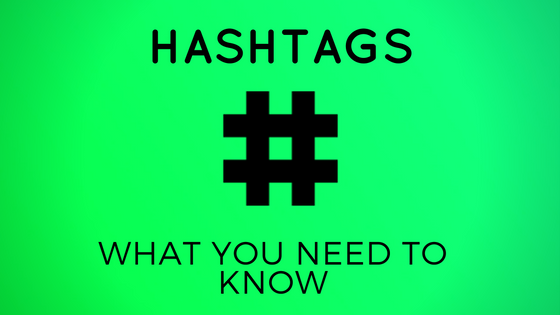
What You Need to Know About Hashtags
Ah, the ubiquitous hashtag—at first teased as superfluous, the hashtag is now one of the quintessential symbols of the 21st century. In 2016, with 78% of Americans having at least one social media profile, hashtags have exploded in popularity and relevance. Though they seem silly, hashtags can actually help lift your social posts above the competition and get you more views and greater engagement. Not to mention, using hashtags takes only a few extra seconds of your time, AND they’re FREE. In short, if your business isn’t leveraging hashtags on social media, you’re doing it wrong.
What is a Hashtag?
Okay, so what IS a hashtag, exactly? A hashtag is any word or phrase preceded by the hash (#) symbol. When attached to a post, a hashtag serves to mark the topic or theme of that post. Hashtags appear as clickable links on posts—clicking a hashtag will lead the user to a real-time feed featuring all posts using that same hashtag. In this way, hashtags essentially are a categorization tool. They help users sort through and find the posts they are most interested in. Hashtags began on Twitter in 2007, when users began grouping topics using the hash symbol. Within a short amount of time, the practice of what is now known as “hashtagging” took off. Today, you can browse using a hashtag-search on nearly any social network.
What Can You Put In a Hashtag?
There are few formal rules surrounding the use of hashtags. However, there are a few technical inhibitions that one should be aware of. First, only certain characters can be made into a hashtags. Spaces are not counted, so if you have a multi-word phrase, you will need to squeeze the words together in order to turn it into a hashtag. For example, if you wanted to promote the phrase “Weekend Flash Sale” you would write #WeekendFlashSale (go ahead and try it!). If you want to differentiate between words, simply capitalize the beginning of each to make the hashtag more legible. Using uppercase vs. lowercase letters has no other affect on your search results. However, using special characters will. While you can use numbers in hashtags, you cannot use commas, periods, exclamation points, question marks, apostrophes, asterisks, and similar symbols. Using such characters will break up your hashtag and make it inactive.
Twitter makes is easy to understand what’s actually being tagged and what’s not, as you type. Notice in the screenshot below, only the active portion of the hashtag will change font color while you’re typing. The portion following an unacceptable character will be seen in regular font.
How to Create an Effective Hashtag
Creating a hashtag seems easy. Simply slap a # sign before a bunch of words, right? While it’s objectively simple, creating an effective hashtag takes a bit more work. Here are some tips to keep in mind while you’re creating hashtags:
-Keep it short. Hashtags should never be more than 2-3 words long. The longer the hashtag, the less likely users will use it—especially on platforms with limited character space, such as Twitter. Longer hashtags are also more difficult to read.
-Stay to the point. Keep your hashtag simple, and to the point. Your hashtag should be self-evident—that is, one should be able to deduce what it’s talking about without having to refer to something else. While this is an ideal situation, not all hashtags can be so succinct, especially if they’re tied to an inside joke or some larger theme, so while you should keep things succinct, don’t tear your hair out if your hashtag takes a second to understand.
-Be unique. It’s important to conduct research and come up with some hashtags that are unique (but relevant!) to your business. You want users to be able to use that hashtag to find your hashtag. Ideally, your hashtag should immediately bring your company to mind. Opt for a hashtag that’s too generic, and your post is sure to get lost in the shuffle. Another thing—you should research the hashtags used by your closets competitors and other companies. The last thing you want to do is try to brand a hashtag that’s already being used by another business!
-Don’t try to get too clever. In the same vein, you shouldn’t try to get too clever or avant-garde with your hashtags, as not everyone may understand them. While it’s good to be en-vogue, don’t try to be “too cool” and risk alienating customers who have no idea what you’re talking about.
-Don’t forget about trending hashtags. A great way to boost your brand’s visibility is to leverage hashtags that are already in use. ‘Trending’ hashtags are pre-existing hashtags that have gotten a lot of traction and use. On Twitter, for example, trending hashtags are displayed on the front page. If you are going to use a trending hashtag, keep in mind that you should have a reason for doing so. Unless your post adds something interesting, relevant, useful, or funny to the conversation, it will likely be ignored in the sea of similar posts.


